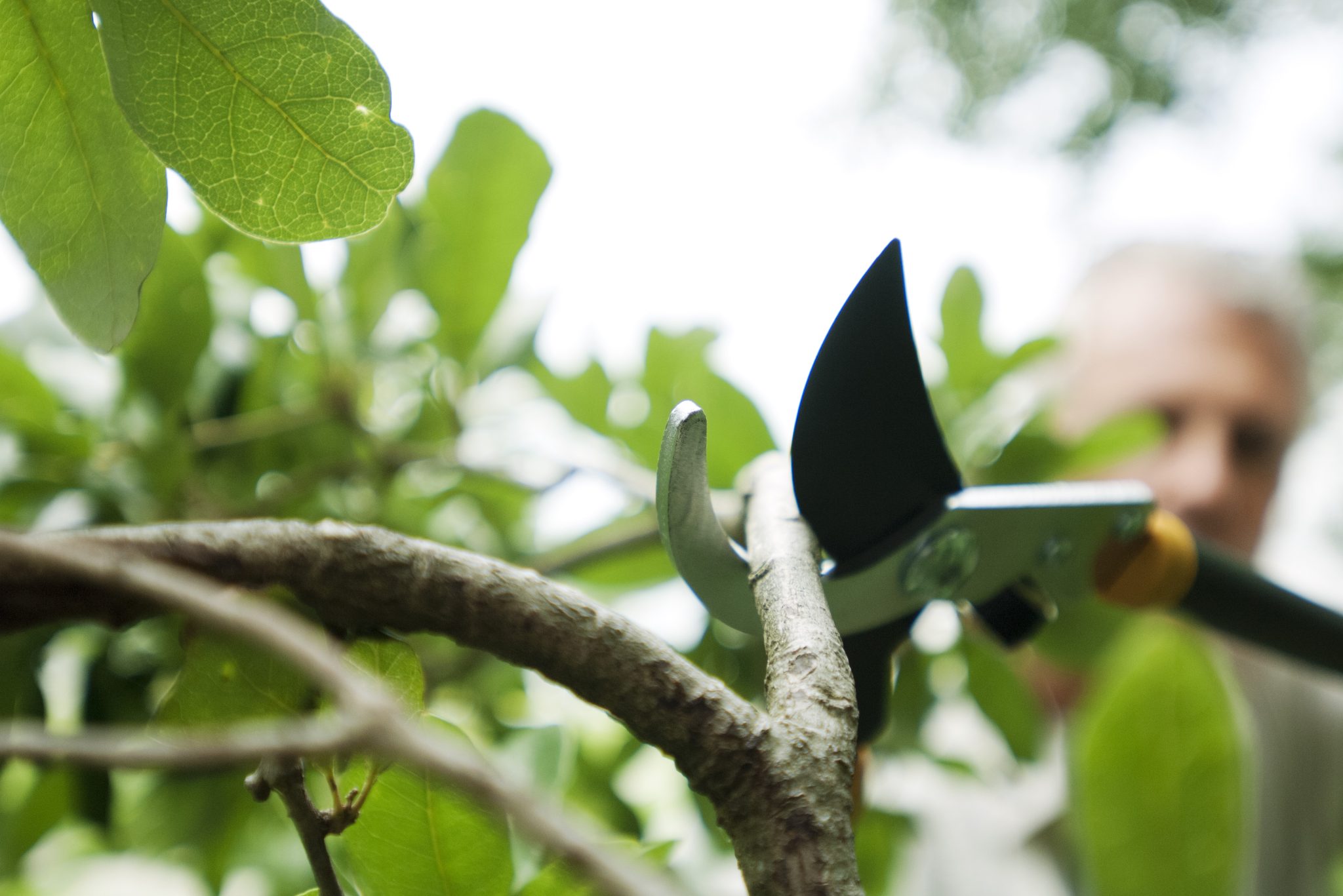Landscaping

Pruning Woody Plants
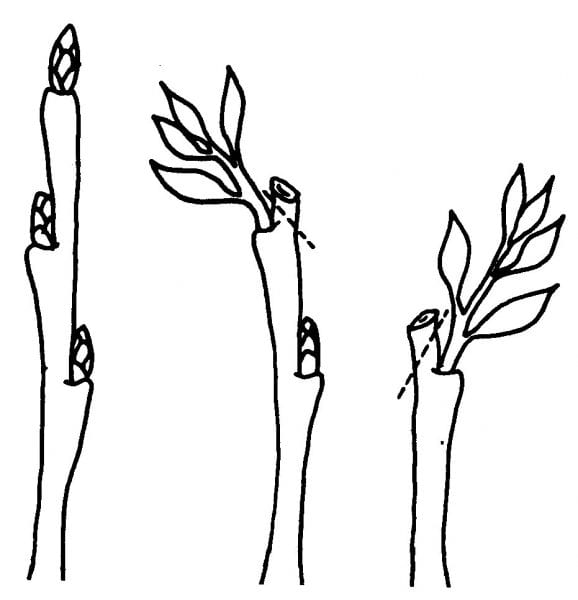
Pruning has a localized effect, stimulating growth in a bud nearest the cut.
Pruning removes unwanted growth to make a plant develop faster or respond in a desired manner. Appropriate pruning can produce more blooms and fruit, reinvigorate growth, develop the desired shape, or remove diseased and damaged parts.
You Will Need:
Research
Plant Observations
Calendar
Disinfectant (optional)
Pruners
- Most shrubs need pruning at some point in their life. Reduce pruning needs by choosing plants according to their mature size and planting them in an area that can accommodate their growth.
- Thinning cuts. Pruning a branch back to its original growth point reduces the amount of regrowth after pruning.
- The May Rule. Perform major pruning cuts in the right season.
- If the plant blooms before May 1, prune soon after flowering has ended because next year’s flowers are produced on this year’s growth. These include azaleas and camellias.
- If the plant blooms after May 1, prune during the dormant season, before new spring growth, because the flowers are produced on the current year’s growth. These include crape myrtles and gardenias.
- Remove dead, diseased, or injured branches at any time.
- Dip pruning shears and saws in disinfectant to prevent spreading diseases among plants. Your solution should be one- part alcohol to nine parts water. Always oil pruners after using a disinfectant.
- Remove branches that cross each other, touch each other, or look out of place.
- Remove shrubs when they are too large for their location. Pruning for size is a constant battle.
- Avoid pruning in times of stress. Pruning is itself stressful on a plant. Good environmental conditions provide for speedier and healthier new growth. Never prune in periods of drought or extreme heat.
- Call professionals to prune trees more than 15 feet high. A good rule of thumb: if your feet must leave the ground to prune, you need a professional.
- Reduce pruning chores. Select slow-growing plants or dwarf and semi-dwarf varieties. Ensure that they have room to reach their mature size.
- For more details, see Extension publication “Woody Landscape Plants: Pruning” (ANR-0258) on the Alabama Extension website.
Mowing Lawns
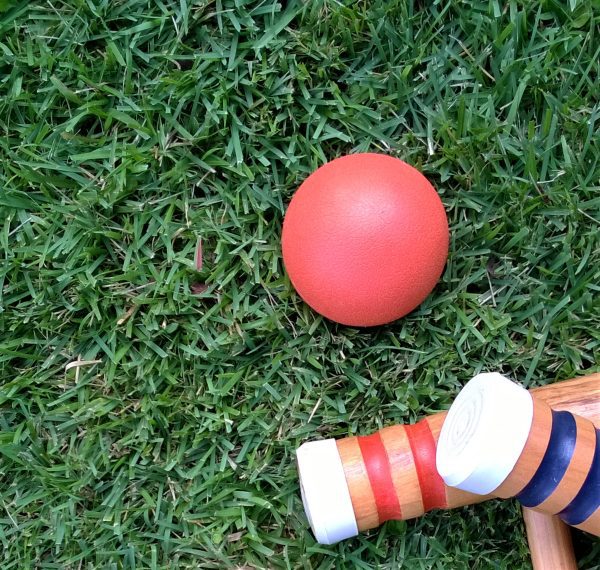
Mowing might be taken for granted, but it is an important step in healthy lawn maintenance.
Mowing produces a lawn rather than a pasture or meadow. It is the most important and possibly most overlooked step for healthy lawns. Proper mowing grows dense lawns and blocks weed seeds and sunlight from the soil surface.
You Will Need:
Research
Plant Observations
Mower
Weather App
- Mow to the right height. Each turfgrass species and variety grow healthier when maintained at its optimal plant height. (See table 1 for recommended mowing heights.)
- Mow often in the growing season. Although we often mow when it is convenient for us, mowing frequency should depend on the growth rate of the turfgrass. This rate varies by turfgrass type, soil fertility, and weather/environmental conditions.
- Watering and fertilizer practices can increase or decrease the lawn’s need for a haircut. Using more of these resources means mowing more often.
- The One-Third Rule. Mow regularly so only a third of the grass height is removed each time.
- For example, a lawn maintained at a 2′′ height should be mowed at or before it reaches 3′′ in height. It is okay to mow a little earlier if you are traveling out of town soon.
- Mowing to maintain the lawn at its optimum height grows dense turf and prevents weed establishment.
- Keeping mower blades sharp makes a lawn look neater and reduces disease and insect pests. Sharpen mower blades 2 or 3 times per year.
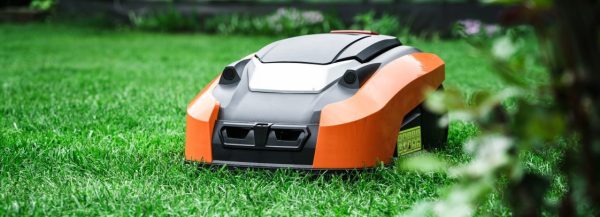
Table 1. Recommended Mowing Heights for Lawn Turfgrasses
**The benefits of robotic rotary mowers are still under investigation. It is suspected that the removal of less plant material at each cutting may be less stressful, resulting in enhanced turf rooting and better conditioning to withstand periodic stresses (drought, pests, etc).
| Turfgrass | Optimum Mowing Height (inches) | Mowing Frequency (days) | Mower Type |
|---|---|---|---|
| Bermudagrass | 1 to 2 | 5 to 7 | Manual or robotic rotary, or reel* |
| Centipedegrass | 1 to 2 | 7 to 14 | Manual or robotic rotary** |
| St. Augustinegrass | 2 1⁄2 to 4 | 7 to 14 | Manual or robotic rotary |
| Tall fescue | 2 to 3 1⁄2 | 7 to 14 | Manual or robotic rotary |
| Zoysiagrass | 1 to 2 | 7 to 14 | Manual or robotic rotary, or reel* |
Mulching
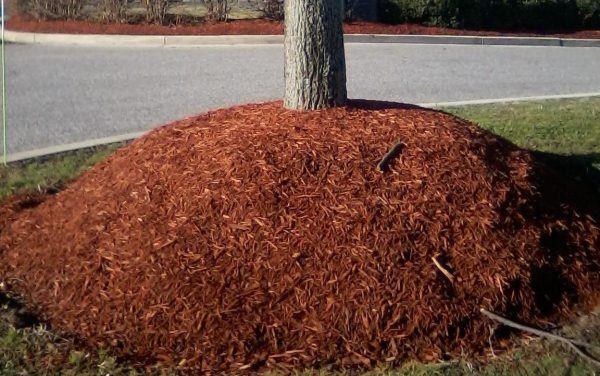
Volcano mulching is an example of improper mulching technique. (Photo credit: Elizabeth Moss, West Virginia State University, Bugwood.org)
Mulching protects both the soil and the plants. The benefits include buffering soil temperature, maintaining soil moisture, inhibiting weed germination and plant diseases, reducing maintenance, and having a neater appearance.
You Will Need:
Research
Mulch
Rake
Shovel
Wheel Barrow (optional)
- Apply a 2- to 3-inch layer of mulch for most planting types.
- Do not add mulch if there is already a sufficient layer in place.
- Do not add more than 1-inch mulch to a newly planted tree or shrub. This can cause drought stress by shedding water intended for roots. Mulch at the perimeter of the new planting area.
- Do not pile mulch against the trunk of the tree. Volcano mulching hinders oxygen exchange to roots and can ultimately result in root rot or trunk decay. Uncover the base of the trunk and the root flare if this is already occurring.
- Mulch out to a tree’s drip line (or at least 8 feet in diameter). A tree’s entire root system would be mulched in a forest environment.
- Avoid thick mulch blankets. This prevents water and air from seeping through. Rake old mulch to break up matted layers, and refresh mulch appearance and function.
- Organic mulch is superior. Organic mulches include bark materials, pine needles, compost, and paper. These improve soil health as they decompose. They may require some weeding and aesthetic replenishment once or twice a year.
- Create self-mulching natural areas. Falling leaves can be a resource rather than yard waste. Consider that forest trees are self-mulched.
- Use mulch that originates on-site. This includes pine needles, chipped shrub clippings, and leaves. This is a sustainable and pest-free practice. Chip or shred fallen leaves to prevent matting.
- Avoid cypress mulch. There are no regulations tracking cypress mulch products. Harvesting cypress irresponsibly depletes fragile wetland systems.
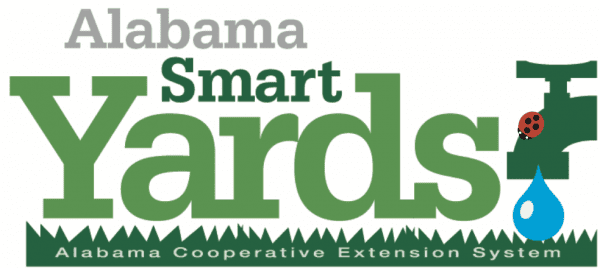
 Kerry Smith, Administrator, Outreach Programs, Horticulture, Auburn University
Kerry Smith, Administrator, Outreach Programs, Horticulture, Auburn University
Revised May 2023, Care and Maintenance – Smart Yards Recipe Series, ANR-2872-B

